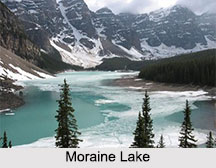 Watergam Rafiabad is a town located in the Baramulla district of the Indian state of Jammu and Kashmir.
Watergam Rafiabad is a town located in the Baramulla district of the Indian state of Jammu and Kashmir.
Location of Watergam Rafiabad
Watergam Rafiabad is 56.9 km (35.4 mi) north-west of Srinagar in Srinagar District of Jammu and Kashmir, and 15 km (9 mi) from the city of Baramulla. It is located on the banks of Nallah Hamal running parallel to the Baramulla-Handwara National Highway.
History of Watergam Rafiabad
The town of Watergam Rafiabad has a very rich history. Syed Kirman the famous Muslim preacher chose Watergam as the centre of his mission and he is buried here on the hilltop. Giving due credit to its centrality and rich history, the Government of Jammu & Kashmir gave Watergam a Tehsil Status which caters to the needs of about 22 villages. The villages from Alsafa colony, Ladoora up to village Pazalpora and Babagund comes under the jurisdiction of this Tehsil.
Geography of Watergam Rafiabad
Watergam Rafiabad is called the "Heart of Rafiabad" constituency. It is equidistant to the three nearby towns, Baramulla 14 km, Sopore 10 km and Handwara 13 km. It has a well-established market in Rafiabad. It has a municipal committee to look into different needs of the town. The municipal limits of Watergam Rafiabad extend from Gundkarim Khan in the west up to Behrampora in the east, Rehmatabad (Thagund), Gundmulraj and Chanapora are also part of the Municipal limits.
Demography of Watergam Rafiabad
Watergam Rafiabad is divided into 13 wards for which elections are held every 5 years. Watergam Rafiabad Municipal Committee has population of 7,015 of which 3,939 are males while 3,076 are females as per report released by Census India 2011. The population of children with age of 0-6 is 727 which is 10.36% of total population of Watergam (MC). In Watergam Municipal Committee, Female Sex Ratio is of 781 against state average of 889. Moreover, Child Sex Ratio in Watergam Rafiabad is around 1095 compared to Jammu and Kashmir state average of 862.
Education of Watergam Rafiabad
The literacy rate of Watergam Rafiabad is 74.60% higher than state average of 67.16%. In Watergam, Male literacy is around 86.08% while female literacy rate is 59.31%.
Watergam Municipal Committee has total administration over 932 houses to which it supplies basic amenities like water and sewerage. It is also authorized to build roads within Municipal Committee limits and impose taxes on properties coming under its jurisdiction. Paradise Public High School is the oldest school in Watergam Rafiabad. It is the pioneer school not only for Watergam but for whole of Rafiabad which has produced the brightest and best minds of the valley. It was founded by Mr. Ab. Majeed Lone. Other notable schools include Govt. Girls High School, Holy Faith Public School, KGBV Watergam, Iqbal Educational Institute.
Economy of Watergam Rafiabad
The horticulture is the primary source of economy in Watergam Rafiabad with apples as one of the major crops.
Related Articles
Cities of Jammu and Kashmir
Culture of Jammu and Kashmir
Jammu and Kashmir
Costumes of Jammu and Kashmir
Baramulla District
Jammu, Jammu & Kashmir
Architecture of Jammu And Kashmir



















